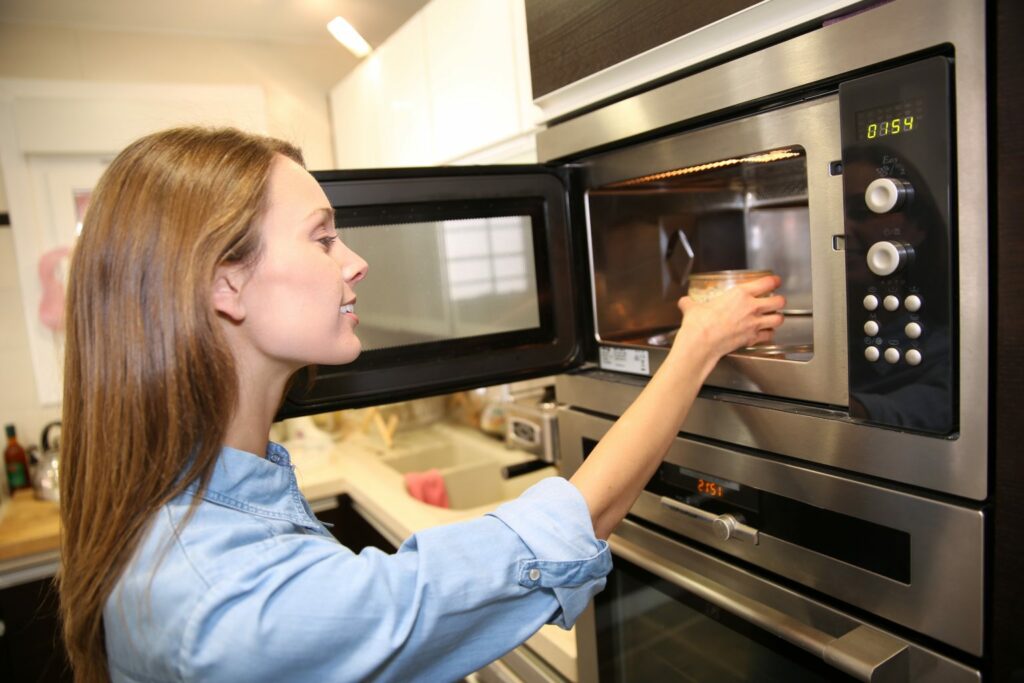Introduction:
Microwave ovens have become an essential appliance in many households, offering convenience and speed in heating and cooking food. However, concerns have been raised regarding their impact on human health. This comprehensive guide aims to explore the potential health effects of microwave ovens and provide an evidence-based analysis of their safety. By examining various aspects, including radiation, nutrient loss, food containers, and microwave usage, we can make informed decisions about whether to use microwave ovens or explore alternative cooking methods.
Microwave Radiation:
One of the primary concerns associated with microwave ovens is the potential radiation exposure. Microwave ovens emit non-ionizing radiation, which is different from ionizing radiation (such as X-rays or gamma rays) that can damage DNA. The microwaves produced by these appliances excite water molecules in food, generating heat through a process known as dielectric heating. The radiation levels emitted by microwave ovens are well below the safety limits set by regulatory authorities, such as the Food and Drug Administration (FDA) in the United States. Thus, when used according to manufacturers’ instructions, microwave ovens pose no significant health risks in terms of radiation exposure.
Nutrient Loss in Microwave Cooking:
Another concern often raised is the potential loss of nutrients in food cooked in a microwave oven. While it is true that some vitamins and minerals can be sensitive to heat, the same applies to all cooking methods, including stovetop and oven cooking. Nutrient loss primarily occurs due to factors like exposure to heat, light, and water. Microwaving food is generally considered a gentler cooking method that can help retain more nutrients compared to prolonged exposure to high heat. To minimize nutrient loss, it is advisable to use minimal amounts of water and avoid overcooking or reheating food for extended periods.
Food Containers and Chemicals:
Certain types of food containers, such as plastic containers, have raised concerns regarding the potential release of harmful chemicals into food when microwaved. It is crucial to use microwave-safe containers that are specifically labeled as such. These containers are designed to withstand the heat generated in a microwave oven without leaching chemicals into food. Avoid using containers not intended for microwave use, as they can release harmful substances, such as bisphenol A (BPA), phthalates, or other plasticizers. Instead, opt for microwave-safe glass or ceramic containers.
Microwave Usage and Food Safety:
When it comes to using microwave ovens safely, a few precautions should be taken to minimize potential risks. First, it is essential to follow the manufacturer’s instructions for safe use. Avoid using metal containers or aluminum foil, as they can cause sparks and potential fire hazards. Additionally, make sure to stir or rotate food during cooking to ensure even heat distribution. Thoroughly cook food to eliminate any harmful bacteria or pathogens. Use a food thermometer to check the internal temperature to ensure food is properly cooked, especially when reheating leftovers. Finally, allow food to stand and stir it after microwaving to ensure any hot spots dissipate and achieve uniform cooking.
Alternatives to Microwave Ovens:
While microwave ovens offer convenience, it is worth considering alternative cooking methods for those concerned about potential health risks. Traditional stovetop cooking, oven baking, steaming, or using slow cookers are all viable options. Each method has its advantages and disadvantages in terms of cooking time, energy efficiency, and nutrient retention. Experimenting with different cooking techniques can help individuals find the method that best suits their needs and preferences.
Conclusion:
Microwave ovens, when used properly, are considered safe for everyday use, with no significant health risks associated with radiation exposure or nutrient loss. It is crucial to follow the manufacturer’s instructions, use microwave-safe containers, and employ best practices for safe microwave usage. While concerns about microwave ovens persist, they are generally outweighed by the convenience and efficiency they offer in modern kitchens. However, individuals who remain skeptical can explore alternative cooking methods to suit their preferences. Ultimately, the choice between nuking or not nuking comes down to personal preference, lifestyle, and comfort levels with this widely used kitchen appliance.

